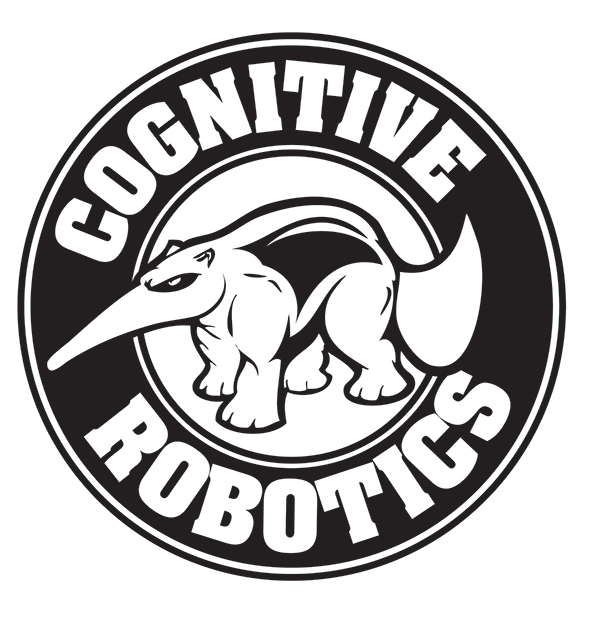UCI-CARL / Carlsim3
Projects that are alternatives of or similar to Carlsim3
CARLsim 3
CARLsim is an efficient, easy-to-use, GPU-accelerated library for simulating large-scale spiking neural network (SNN) models with a high degree of biological detail. CARLsim allows execution of networks of Izhikevich spiking neurons with realistic synaptic dynamics on both generic x86 CPUs and standard off-the-shelf GPUs. The simulator provides a PyNN-like programming interface in C/C++, which allows for details and parameters to be specified at the synapse, neuron, and network level.
The present release, CARLsim 3, builds on the efficiency and scalability of earlier releases (Nageswaran et al., 2009; Richert et al., 2011). The functionality of the simulator has been greatly expanded by the addition of a number of features that enable and simplify the creation, tuning, and simulation of complex networks with spatial structure. New features include:
- improved platform compatibility (Linux, Mac OS X, and Windows)
- real-time and offline data analysis tools
- a more complete STDP implementation which includes dopaminergic neuromodulation
- an automated parameter tuning interface that utilizes evolutionary algorithms to construct functional SNNs
- a test suite for functional code verification
- an exhaustive User Guide and Tutorials
If you use CARLsim 3 in a scholarly publication, please cite as follows:
Beyeler, M., Carlson, K.D., Chou, T.-S., Dutt, N., Krichmar, J.L. (2015). CARLsim 3: A user-friendly and highly optimized library for the creation of neurobiologically detailed spiking neural networks. Proceedings of the International Joint Conference on Neural Networks, doi:10.1109/IJCNN.2015.7280424
Or use the following bibtex:
@inproceedings{CARLsim3,
author = {M. Beyeler and K. D. Carlson and T.-S. Chou and N. Dutt and J. L. Krichmar},
booktitle = {2015 International Joint Conference on Neural Networks (IJCNN)},
title = {{CARL}sim 3: {A} user-friendly and highly optimized library for the creation of neurobiologically detailed spiking neural networks},
year = {2015},
pages = {1-8},
doi = {10.1109/IJCNN.2015.7280424},
url = {http://dx.doi.org/10.1109/IJCNN.2015.7280424},
ISSN = {2161-4393},
month = {July}
}
Installation
Detailed instructions for installing the latest stable release of CARLsim on Mac OS X / Linux / Windows can be found in our User Guide.
In brief (OS X/Linux):
-
Fork CARLsim 3 by clicking on the
Forkbox in the top-right corner. -
Clone the repo, where
YourUsernameis your actual GitHub user name:$ git clone --recursive https://github.com/YourUsername/CARLsim3 $ cd CARLsim3Note the
--recursiveoption: It will make sure Google Test gets installed. -
Choose between stable release and latest development version:
- For the stable release, use the
stablebranch:$ git checkout stable - For the latest development branch, you are already on the right branch (
master).
- For the stable release, use the
-
Consider your options: You can choose the installation directory and whether you want GPU support.
-
Installation directory: By default, the CARLsim library lives in
/usr/local/lib, and CARLsim include files live in/usr/local/include/carlsim. You can overwrite these by exporting an evironment variable calledCARLSIM3_INSTALL_DIR:$ export CARLSIM3_INSTALL_DIR=/path/to/your/preferred/dir -
GPU support: By default, CARLsim comes with CUDA support. Obviously, this requires CUDA to be installed first. If you want to run CARLsim without GPU support, you need to export an environment variable called
CARLSIM3_NO_CUDAand set it to1:$ export CARLSIM3_NO_CUDA=1
-
-
Make and install:
$ make -j4 $ sudo -E make installNote the
-Eflag, which will causesudoto remember any environment variables you set above (such asCARLSIM3_INSTALL_DIRandCARLSIM3_NO_CUDA). -
In order to make sure the installation was successful, you can run the regression suite:
$ make test $ ./carlsim/test/carlsim_tests -
Start your own project! The "Hello World" project is a goot starting point for this. Make sure it runs:
$ cd projects/hello_world $ make $ ./hello_world
On Windows 7/10: Simply download the code and open/run the "Hello World" project file
projects\hello_world\hello_world.vcxproj.
Prerequisites
CARLsim 3.1 comes with the following requirements:
- (Windows) Microsoft Visual Studio 2012 or higher.
- (optional) CUDA Toolkit 5.0 or higher. For platform-specific CUDA installation instructions, please navigate to
the NVIDIA CUDA Zone.
This is only required if you want to run CARLsim in
GPU_MODE. Make sure to install the CUDA samples, too, as CARLsim relies on the file helper_cuda.h. - (optional) A GPU with compute capability 2.0 or higher. To find the compute capability of your device please
refer to the CUDA article on Wikipedia.
This is only required if you want to run CARLsim in
GPU_MODE. - (optional) MATLAB R2014a or higher. This is only required if you want to use the Offline Analysis Toolbox (OAT).
As of CARLsim 3.1 it is no longer necessary to have the CUDA framework installed. However, CARLsim development will continue to focus on the GPU implementation.
The current release has been tested on the following platforms:
- Windows 7, 10
- Ubuntu 12.04, 12.10, 13.04, 13.10, 14.04, 16.04
- Arch Linux
- CentOS 6
- OpenSUSE 13.1
- Mac OS X




